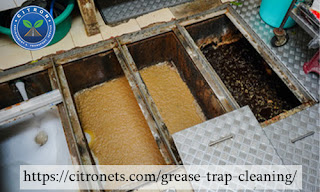Interceptor Maintenance Guide: Ensuring Optimal Performance and Longevity
Interceptors play a crucial role in maintaining the functionality of various systems, from stormwater management to oil separation. Regular maintenance is essential to ensure these units operate efficiently and extend their lifespan. Here's a comprehensive guide for interceptor maintenance:
1. Scheduled Inspection Routine
Establish a routine inspection schedule to assess the overall condition of the interceptor. Regular inspections, ideally every three to six months, allow for the early detection of potential issues and preventive maintenance.
2. Surface Debris Removal
Clear the interceptor's surface of any debris, sediment, or floating materials. Accumulated debris can impede the interceptor's functionality and lead to clogs. Use appropriate tools to safely remove these materials without causing damage to the unit.
3. Inspect Inlet and Outlet Pipes
Examine the inlet and outlet pipes for signs of blockages, leaks, or damage. Ensure that the pipes are securely connected and free from any obstructions that might hinder the flow of liquids through the interceptor.
4. Check and Replace Filter Media
If your interceptor is equipped with filter media, inspect it regularly and replace it as needed. Clean or replace the media according to the manufacturer's guidelines to maintain effective pollutant removal.
5. Evaluate Oil-Water Separator Performance
For interceptors designed to separate oil from water, assess the efficiency of the oil-water separator. Verify that the separator components are functioning correctly and remove any accumulated oil or sludge.
6. Inspect Structural Integrity
Examine the structural integrity of the interceptor, including the chamber walls and lids. Look for cracks, corrosion, or any signs of wear that may compromise the unit's durability. Address any structural issues promptly to prevent further damage.
7. Monitor Water Levels
Regularly monitor the water levels within the interceptor. Abnormal water levels may indicate a malfunction or blockage. Investigate and resolve issues promptly to prevent overflow or ineffective pollutant removal.
8. Documentation and Record-Keeping
Maintain detailed records of all maintenance activities, inspections, and repairs. Documentation helps track the interceptor's performance over time and facilitates future maintenance planning.
9. Professional Maintenance Checks
Periodically, engage professional maintenance services to conduct a comprehensive check of the interceptor. Professionals can identify issues that may not be apparent during routine inspections and perform specialized maintenance tasks.
10. Emergency Response Planning
Develop an emergency response plan in case of unexpected issues or environmental incidents. Having a well-defined plan in place ensures a prompt and effective response to any emergencies related to the interceptor.
By following this maintenance guide, you can ensure that your interceptor functions optimally, adheres to environmental regulations, and maintains a long service life. Regular inspections and preventive measures are key to preserving the efficiency and reliability of interceptor systems.
Written By: Best interceptor cleaning services in abu dhabi




Comments
Post a Comment